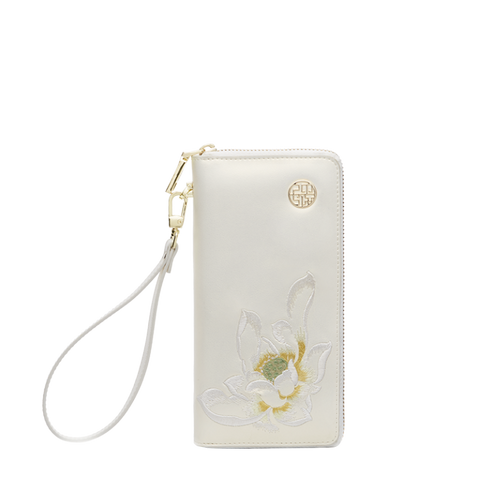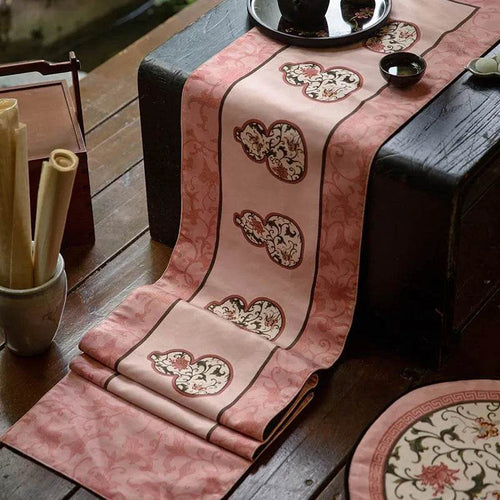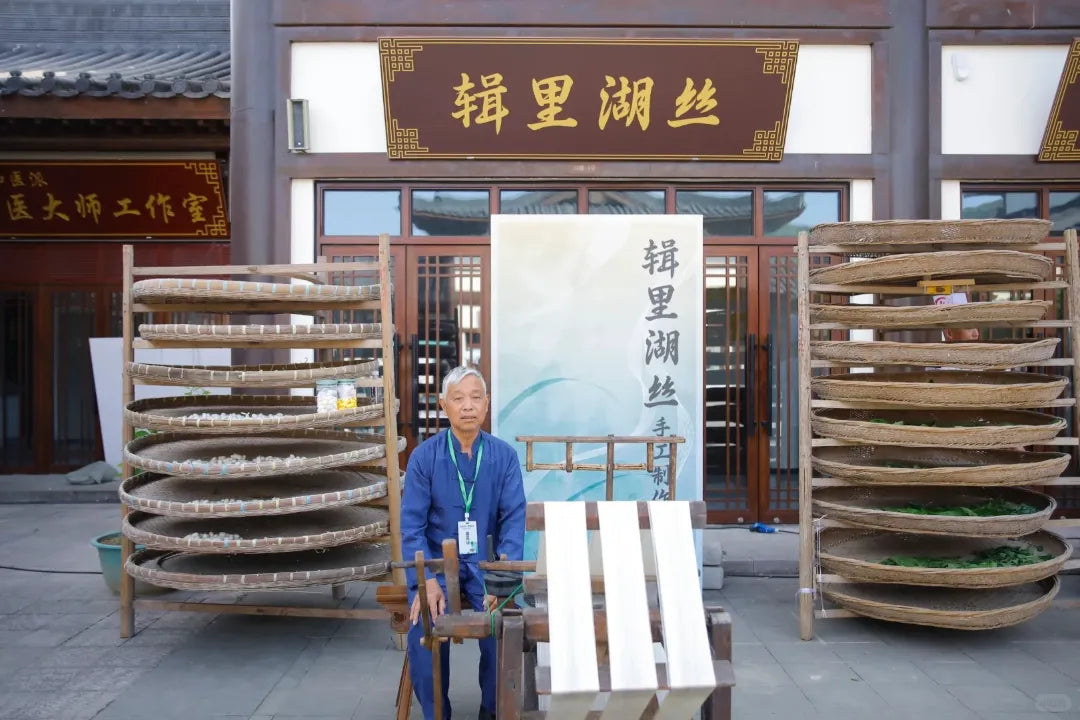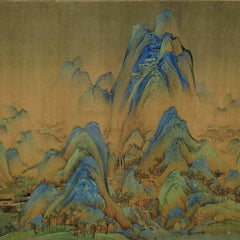مع حلول الخريف، يبدو العالم وكأنه يتباطأ، وتخفّ الألوان، وتكتسي الطبيعة بسحرٍ أكثر هدوءًا. في التقويم الصيني التقليدي، يُجسّد هذا الإيقاع الموسمي من خلال المصطلحات الشمسية الأربعة والعشرين - وهو نظامٌ يُقسّم السنة إلى أربعة وعشرين مرحلةً بناءً على حركة الشمس. من بينها، يُعدّ الندى الأبيض (بايلو، 白露) من أكثرها شاعريةً وجمالًا، إذ لا يُشير فقط إلى تحوّل في الطقس، بل إلى حكمةٍ ثقافيةٍ أعمق حول كيفية عيش البشر في انسجامٍ مع الفصول.

ما هو الندى الأبيض؟
الندى الأبيض هو الفصل الشمسي الخامس عشر، ويصادف عادةً بين 7 و9 سبتمبر من كل عام. يُشير إلى نهاية أوائل الخريف (تشو تشيو) وبداية منتصف الخريف (تشونغ تشيو). يُشتق اسمه من ظاهرة طبيعية: مع برودة الليالي، يتكثف بخار الماء مُشكّلاً ندىً متلألئًا على العشب والأوراق، يتلألأ كاللآلئ الصغيرة في شمس الصباح.
لقرون، استخدم الشعراء الصينيون الندى كاستعارة للنقاء والزوال ومرور الزمن. وهكذا، فإن الندى الأبيض ليس مجرد علامة على التقويم، بل هو أيضًا تذكير بجمال الخريف الزائل.

معنى ورمزية الندى الأبيض
يرمز الندى الأبيض إلى الانتقال والنضج. تلاشى حر الصيف، وبدأ برد الخريف يحلّ. إنها لحظة توازن: أيام دافئة، وليالٍ منعشة، وإيقاع طبيعي يحثّ البشر والحيوانات على الاستعداد للأشهر القادمة.

في الثقافة التقليدية، يرمز الندى الأبيض إلى:
- الوضوح - مثل الندى، نقي وشفاف.
- الحصاد - تنضج المحاصيل ويتم جمع الوفرة.
- التحضير - تذكير لطيف بأن الأيام الباردة قريبة.
بالنسبة للعديد من الناس، يجسد اللون الأبيض الندى جمال العيش في تناغم مع دورات الطبيعة.

خصائص مناخ الندى الأبيض
خلال فترة الندى الأبيض، يتغير الطقس بشكل ملحوظ:
- يظل النهار دافئًا، لكن الليالي تصبح أكثر برودة، مما يتطلب في بعض الأحيان ارتداء سترة خفيفة.
- يتسع الفارق في درجات الحرارة بين الليل والنهار.
- يصبح الهواء أكثر جفافًا، مما قد يؤثر على صحة الجلد والحلق.
النصيحة التقليدية في هذه الفترة بسيطة: حافظ على رطوبة جسمك. شرب المزيد من الماء، وشاي الأعشاب، والشوربات الموسمية يُساعد على الحفاظ على توازن الجسم.

الأنشطة الزراعية لشركة وايت ديو
بالنسبة للمزارعين، يُعدّ موسم الندى الأبيض من أكثر أوقات السنة ازدحامًا. تنبض الحقول والبساتين بالحياة.
- في شمال شرق الصين ، يقوم الناس بحصاد الدخن والذرة الرفيعة وفول الصويا.

- في الجنوب ، يبدأ قطف القطن.

- في الشمال الغربي ، يقوم المزارعون الآن بزراعة القمح الشتوي باستخدام الطائرات بدون طيار، استعدادًا للدورة التالية.

لذا، يرتبط الندى الأبيض ارتباطًا وثيقًا بالوفرة والامتنان. فهو يُذكرنا بأن الطعام على مائدتنا هو ثمرة عمل دؤوب وإيقاع الطبيعة.
الملاحظات الثلاث للندى الأبيض (سان هو، 三候)
قسّم العلماء القدماء كل فصل شمسي إلى ثلاث مراحل، كل مرحلة تستمر حوالي خمسة أيام. بالنسبة لظاهرة الندى الأبيض، تُركّز هذه الملاحظات على الطيور:
-
تبدأ الأوز البرية رحلتها: حيث تطير خطوط طويلة من الأوز جنوبًا إلى الأراضي الأكثر دفئًا، وهو رمز كلاسيكي لسماء الخريف.

-
عودة السنونو : الطيور الصغيرة التي قضت الصيف في الصين تطير الآن نحو الجنوب، متجنبة البرد.

-
تقوم الطيور بإعداد الطعام : حيث تستشعر العديد من الطيور اقتراب فصل الشتاء، فتبدأ بتخزين الإمدادات.

تظهر هذه "الملاحظات الثلاث" كيف تتكيف الحيوانات بشكل طبيعي مع التحولات الموسمية، مما يعكس نفس الحكمة التي يتبعها البشر في الزراعة والحياة اليومية.
تقاليد الطعام في وايت ديو
لقد كان الطعام دائمًا محوريًا في الثقافة الصينية، ويجلب White Dew تقاليده الفريدة:
-
فاكهة اللونجان : تؤكل طازجة أو مجففة، ويعتقد أنها تعمل على تعزيز الطاقة وتغذية الجسم.

-
البطاطا الحلوة : طعام دافئ ومشبع مثالي لليالي الباردة.

-
شاي الندى الأبيض : يُقال إن أوراق الشاي المُقطوفة في هذا الموسم تتميز بأرق رائحة. يُبطئ الهواء البارد نمو النباتات، مما يُركز النكهة في كل ورقة.

-
"الأطعمة البيضاء العشرة" (شي يانغ باي، 十样白) : في بعض المناطق، يأكل الناس عشرة أنواع من الأطعمة ذات اللون الأبيض، مثل الكمثرى والسمسم الأبيض وبذور اللوتس، كرمز للبركة للصحة وطول العمر.

تعكس هذه الممارسات اعتقادًا بأن الطعام هو الدواء، وأن تناول الطعام حسب الفصول يبقي الجسم قويًا.
العادات والطقوس الشعبية في وايت ديو
إلى جانب الطعام، يحمل White Dew التقاليد الشعبية:
-
جمع ندى الصباح : في العصور القديمة، كان الناس يجمعون قطرات الندى من الزهور والأوراق، معتقدين أن الماء لديه قوى علاجية للبشرة والجسم.

-
عبادة يو العظيم : في جنوب الصين، تقيم المجتمعات طقوسًا لتكريم يو، البطل الأسطوري الذي سيطر على الفيضانات، وإظهار الامتنان للحصاد الآمن والحياة المستقرة.

على الرغم من أنها أقل شيوعًا اليوم، فإن هذه العادات تسلط الضوء على فكرة خالدة: احترام الطبيعة، وتكريم الأجداد، والعيش بامتنان.
لماذا لا يزال الندى الأبيض مهمًا حتى يومنا هذا
للقراء المعاصرين، يُعدّ "الندى الأبيض" أكثر من مجرد علامة موسمية، بل هو تذكير لطيف بالتوقف والاستمتاع بطقوس الحياة البسيطة. في "سينو كلتشرال" ، نُضفي هذه الروح على منازلكم مع مجموعتنا الجديدة من مفارش المائدة . مصنوعة من قطيفة ناعمة عالية الكثافة ومزينة بشرابات يدوية الصنع، وتأتي هذه المفارش بألوان الوردي، والوردي الفاتح، والبني، والأزرق الخزفي، والأخضر - وهي ألوان مثالية لفصل الخريف. تخيلوا أن تضعوا واحدة على طاولة القهوة أو الشاي، وتسكبون كوبًا دافئًا من القهوة أو الشاي العطري، وتتركون نسيم الموسم المنعش يُهدئكم. يدعونا "الندى الأبيض" للعيش في وئام مع الطبيعة، وتساعد تصاميمنا على خلق لحظة من الهدوء والجمال والتواصل الموسمي في منزلكم.

الخاتمة: أناقة ندى الخريف
الندى الأبيض (بايلو) ليس مجرد تاريخ في التقويم التقليدي، بل هو تذكيرٌ بمدى ارتباط الحياة البشرية بالإيقاعات الموسمية. من ندى الفجر المتلألئ إلى طيران الأوز المهاجر، ومن الحصاد الوفير إلى البطاطا الحلوة الدافئة، تحمل كل تفصيلة قصةً عن التوازن والاستعداد والجمال.
مع تحول العالم إلى البرودة، تدعونا White Dew إلى احتضان نعمة الخريف الهادئة وإيجاد المعنى في دورات الحياة الطبيعية.



































